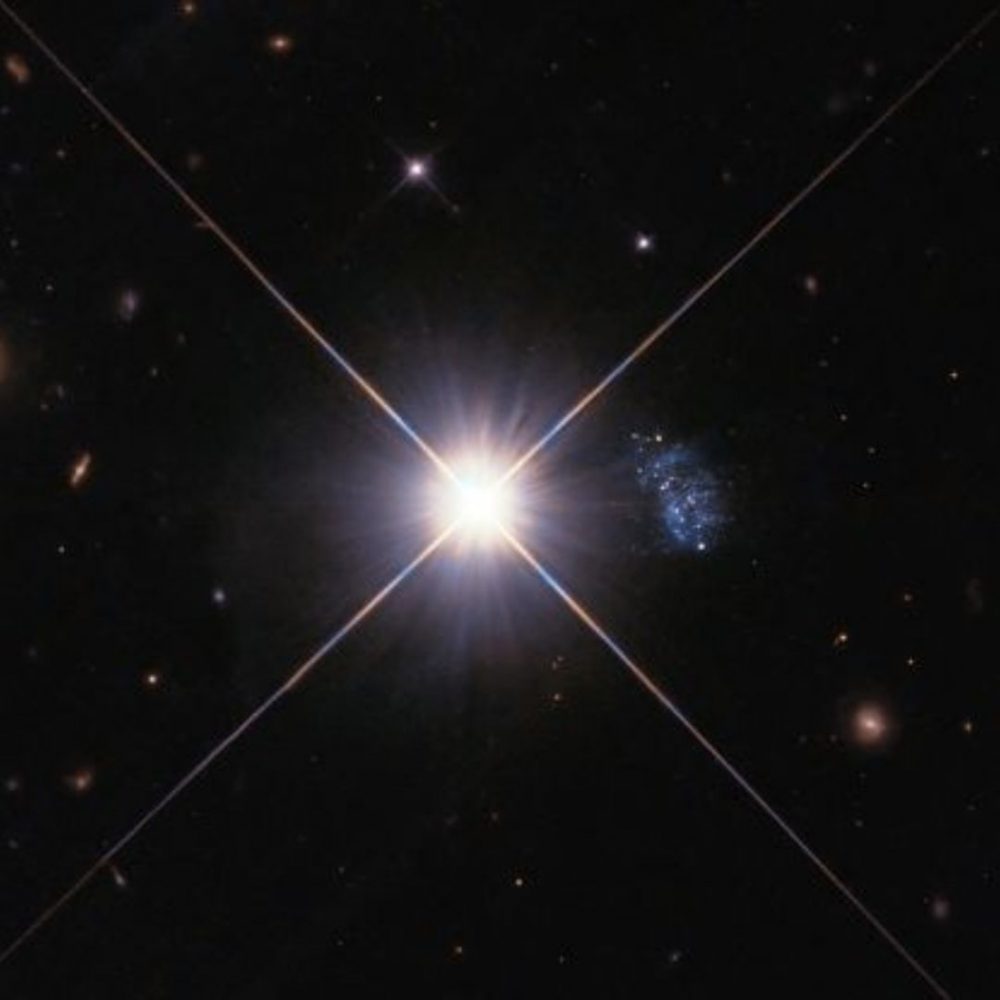
‘Peekaboo’ Galaxy!
Recommended for Preparatory Grades
Astronomers had been looking for the Peekaboo galaxy for more than 20 years. Now, they have finally found it.
It is also called HIPASS J1131-31, but because of its elusive nature scientists fondly called it “Peekaboo”. It is about 22 million light-years away. In addition, it’s tiny and a bright star in the Milky Way blocks its vision.
Scientists discovered “Peekaboo” through a cooperative effort of space and ground-based telescopes. The observations were a combination of optical, radio and optical spectroscopy using some of the best-known space telescopes.
These observations helped the researchers determine that there were nearly 60 individual stars in the Peekaboo region. Furthermore, the telescopes also assisted them in determining the composition of the stars.
Key facts!
- According to astronomers, “Discovering the Peekaboo Galaxy is like discovering a direct window into the past.”
- It enables them to study its extreme environment and stars at a level of detail that is inaccessible in the distant, early Universe.
- As there is an overwhelming quantity of matter spread across the cosmos, it is not uncommon for more nearby things to be obscured by those further away in space.
- Observations in the ultraviolet spectrum showed that Peekaboo is a type of galaxy known as a compact blue dwarf galaxy.
- This type of galaxy is a small galaxy that is experiencing an explosion in the birth of young stars, the brightest of which appear blue.
- In addition, the amount of metals in Peekaboo is astonishingly low.
- In general, the metallicity of an object can be used to determine when it formed in the universe.
- Thus more recent objects have a higher content of heavy elements in their makeup.
- This is due to the fact that there wasn’t a lot of metal floating around in the universe when it was just starting off.
- The researchers aspire to compile a more detailed catalogue of the galaxy’s chemical composition.
Similar Stories
- Invisible Stars? Bizarre Galaxy Universe Revealed
- James Webb Telescope Reveals Vanishing Galaxy
- Milky Way turns into a playground for Cartwheel Galaxy!
- Hubble telescope shows image of odd mirrored galaxy!
- Scientists find heartbeat signals from a distant galaxy
Watch a video
Youtube user “Cool Cape Carnival” walks us around the South African Large Telescope that was used in the discovery of the Peekaboo Galaxy.
Curious Times is a leading newspaper and website for kids. We publish daily global news aligned to your learning levels (also as per NEP 2020): Foundational, Preparatory (Primary), Middle, and Senior. So, check out the News tab for this. We bring kids’ favourite Curious Times Weekly newspaper every weekend with top news, feature stories, and kids’ contributions. Also, check out daily JokesPoke, Tongue Twisters, Word of the Day, and Quote of the Day, kids need it all the time.
Curious Times News Program for Schools for FREE. Over 5,000 schools and teachers from all over the world have joined our program so that students and teachers can get FREE Educative Newspaper. Here, kids can take part in world events and win prizes and certificates for free through their schools.
Moreover, schools are sharing important School News, like interviews with the principal, notices about new students, contests, and results, not just on social media but also on a news website for kids and other schools.
Thus, do not wait, sign-up for your school for FREE.
The following social media platforms allow you to communicate with us: WhatsApp, Instagram, Facebook, Youtube, Twitter, and LinkedIn.
0 (Please login to give a Curious Clap to your friend.)
